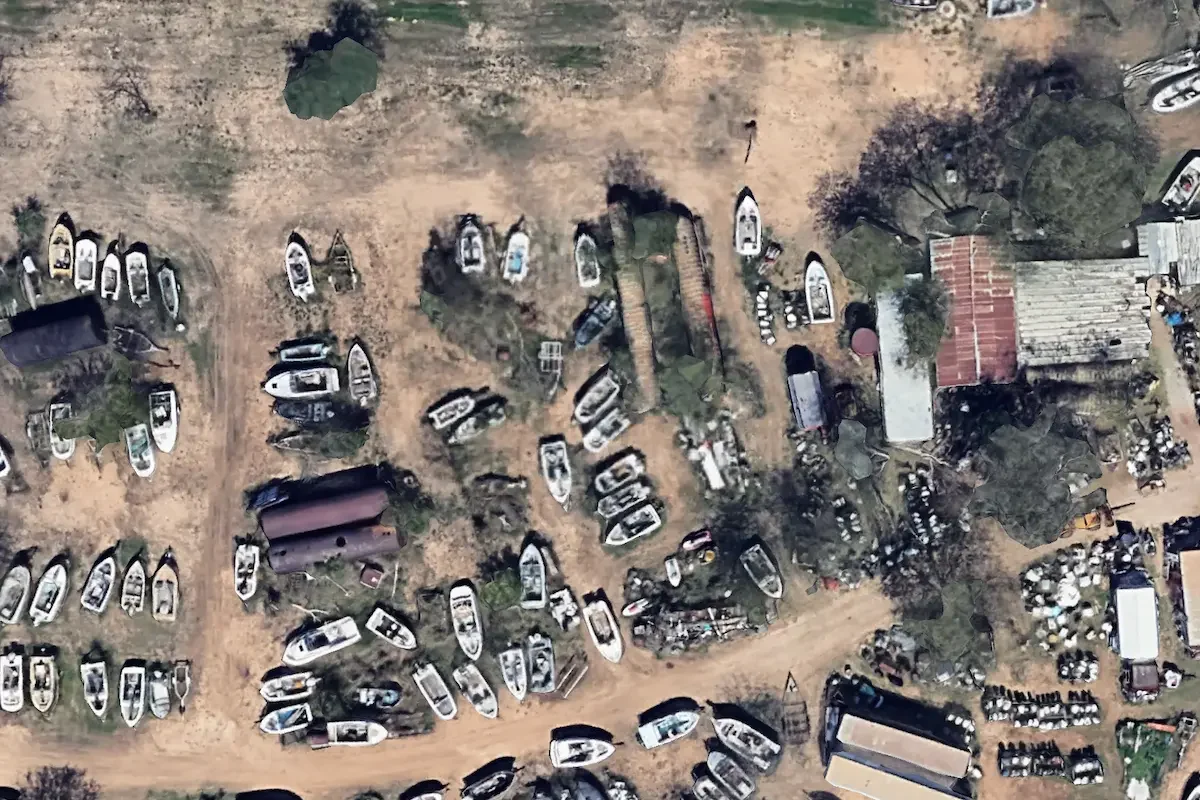Capacity plates are a crucial aspect of boat operations and maintenance. They provide information about the maximum weight and occupancy limits for a boat, ensuring its safe and efficient operation.
Understanding the information on a capacity plate is essential for maximizing equipment performance and ensuring regulatory compliance. In this guide, we will explore the importance of capacity plates, how to properly interpret and maintain them, and best practices for ensuring equipment upgrades do not affect their accuracy.
From decoding symbols to the legal importance of capacity plates, this guide provides a comprehensive overview of everything you need to know about capacity plates on boats.

What are the Equipment’s Capabilities?
Boat owners and operators need to understand the capabilities and limitations of their equipment to ensure its safe and efficient operation. Capacity plates provide critical information about a boat’s maximum weight and occupancy limits, helping to improve safety and ensure equipment performance.
In this section, we will explore what information can be found on a capacity plate and how to decode the symbolism used on these important safety devices.
What Information Can You Find on a Capacity Plate?
A capacity plate provides a wealth of information about a boat’s weight and occupancy limits. Some of the most important information found on a capacity plate includes:
- Maximum weight capacity, including the total weight of passengers, gear, and fuel
- Maximum number of passengers allowed on board
- Maximum horsepower rating
- Maximum weight capacity for gear, including fishing gear, water skis, and other equipment
- Maximum weight capacity for fuel
- Recommended safe loading and weight distribution guidelines
How do Capacity Plates help Improve Safety in Operations?
Capacity plates help improve safety in boat operations by providing clear and concise information about a boat’s weight and occupancy limits. By following the information on the capacity plate, boat owners and operators can ensure that their boat is not overloaded, reducing the risk of capsizing or sinking.
The information on a capacity plate also helps boat owners and operators to distribute weight evenly, improving stability and reducing the risk of tipping.
How to Decode the Symbols Used on Capacity Plates?
Capacity plates use a range of symbols and markings to convey important information about a boat’s weight and occupancy limits. Some of the most common symbols include:
- HP: Indicates the maximum horsepower rating for the boat
- Person Capacity: Indicates the maximum number of passengers allowed on board
- Gear Capacity: Indicates the maximum weight capacity for gear and equipment
- Fuel Capacity: Indicates the maximum weight capacity for fuel
- Load Lines: Show the recommended weight distribution for the boat It is important to familiarize yourself with the symbols used on your boat’s capacity plate to ensure you are properly interpreting and following the information it provides.
What is The Importance of Capacity Plates?
Capacity plates serve an important function in maximizing the performance of boats and watercrafts. These plates provide crucial information about the boat’s weight capacity, maximum passenger count, and other safety-related details.
In this section, we’ll explore why reading a capacity plate is critical for equipment performance, the role of capacity plates in ensuring safe operation of equipment, and how capacity plates affect efficiency and productivity in operations.
Why Reading a Capacity Plate is Critical for Equipment Performance?
Reading a capacity plate is important because it provides information about the boat’s weight limit and passenger count. This information helps boat owners and operators ensure that their equipment is being used safely and within its capabilities. Overloading a boat can lead to dangerous conditions on the water, including capsizing and sinking. By properly reading the capacity plate, boat owners and operators can avoid these dangerous situations and ensure that their equipment is being used within its capabilities.
The Role of Capacity Plates in Ensuring Safe Operation of Equipment
Capacity plates play a critical role in ensuring the safe operation of boats and watercrafts. By providing information about the boat’s weight limit and passenger count, capacity plates help boat owners and operators avoid overloading their equipment.
This is especially important when there are many people on board or when the boat is carrying heavy equipment or supplies. Overloading a boat can lead to dangerous conditions on the water and can result in injury or even death. By following the information on the capacity plate, boat owners and operators can help ensure the safe operation of their equipment.
How Capacity Plates Affect Efficiency and Productivity in Operations?
Capacity plates not only help ensure the safety of boat operations but also have a significant impact on efficiency and productivity. When a boat is properly loaded, it operates more efficiently and provides a smoother ride. This not only improves the experience for passengers, but also makes it easier for the operator to control the boat.
Properly using a capacity plate also ensures that the equipment is being used within its capabilities, which can help extend the lifespan of the boat and reduce the need for costly repairs. By maximizing the performance of the boat and avoiding dangerous conditions, capacity plates play a key role in improving efficiency and productivity in operations.
How to Interprete Capacity Plate Data?
Capacity plates provide important information about a boat’s equipment capabilities and limitations, and it is critical to understand how to read and interpret this information.
The Capacity Plate’s Load Ratings and Limitations
A capacity plate typically includes load ratings for different aspects of the boat, including the maximum number of people, maximum weight, and maximum horsepower.
The load ratings indicate the maximum amount of weight the boat can safely carry, including passengers, gear, and fuel. It is important to never exceed these load ratings to ensure the safety and stability of the boat while in operation.
Capacity plates are usually located near the boat’s steering station and are often made of durable materials such as aluminum or stainless steel. The information on the plate is usually presented in a clear and concise manner, but it is important to carefully review the information and ensure that it is fully understood.
Some common symbols used on capacity plates include the number of people the boat can safely carry, the maximum weight, and the maximum horsepower.
The Impact of Ignoring Capacity Plate Information on Equipment Performance
Ignoring the information presented on a capacity plate can have serious consequences for both the equipment and those on board. Overloading a boat can cause instability and put everyone on board at risk, and it can also damage the boat’s equipment and reduce its performance.
Overloading a boat can also make it difficult to handle and may impact the boat’s fuel efficiency. It is critical to always follow the information presented on the capacity plate to ensure the safety and performance of the equipment.
The Significance of Capacity Plates in Equipment Maintenance
Capacity plates play a crucial role in the maintenance and longevity of equipment, especially boats. The information on a capacity plate provides important insights into the capabilities and limitations of the equipment, which can be used to help ensure its longevity.
The Relationship Between Capacity Plates and Preventative Maintenance
One of the primary ways that capacity plates are tied to equipment maintenance is through preventative maintenance. The information on a capacity plate can be used to help identify potential problems and to plan maintenance activities that can help prevent equipment failure. For example, if a capacity plate indicates that a boat is overloaded, this information can be used to identify the need for additional weight-bearing equipment or to plan maintenance activities that can help ensure that the boat’s weight is distributed evenly.
How Capacity Plates Help Ensure Equipment Longevity?
In addition to preventative maintenance, capacity plates also play an important role in ensuring the longevity of equipment. By providing important information about the equipment’s capabilities and limitations, capacity plates can be used to help ensure that the equipment is not used beyond its limits. This can help prevent equipment damage and ensure that it operates safely and efficiently for years to come.
What are the Benefits of Regularly Checking and Updating Capacity Plate Information?
Regularly checking and updating capacity plate information is essential to ensure the longevity of equipment and to keep it operating safely and efficiently. By monitoring capacity plate information, maintenance teams can identify and address any problems before they escalate and cause significant damage to the equipment.
Additionally, regularly checking and updating capacity plate information can also help maintain compliance with safety regulations and help ensure that equipment is always operating within its limits.
What is Capacity Plates and Regulatory Compliance?
Capacity plates are an important aspect of equipment operations, not just from a performance perspective, but also from a legal one. In this section, we’ll cover the legal importance of capacity plates, how they affect compliance with safety regulations and the consequences of ignoring capacity plate requirements in equipment operations.
The Legal Importance of Capacity Plates in Equipment Operations
Capacity plates are often required by law to be displayed on boats and other equipment in order to help ensure safe operations. This is because capacity plates provide critical information about a boat’s weight capacity, its maximum occupancy, and other important safety-related information.
Failing to comply with capacity plate requirements can result in fines and other penalties, which can negatively impact the efficiency and profitability of your equipment operations. For this reason, it’s important to ensure that your equipment has up-to-date capacity plates that accurately reflect its capabilities and limitations.
How Capacity Plates Affect Compliance with Safety Regulations?
Capacity plates play an important role in ensuring that equipment operations are in compliance with safety regulations. These regulations are designed to help prevent accidents, injuries, and other incidents that could arise from overloading equipment, putting too many people on a boat, or otherwise exceeding the equipment’s weight and occupancy limits.
By accurately reflecting the equipment’s capacity, capacity plates can help you stay in compliance with these regulations and ensure that your equipment operations are as safe as possible.
The Consequences of Ignoring Capacity Plate Requirements in Equipment Operations
Ignoring capacity plate requirements can result in serious consequences, both from a legal and safety perspective. In some cases, equipment operators who fail to comply with capacity plate requirements can face fines, legal penalties, and other consequences that can significantly impact their operations.
Additionally, ignoring capacity plate requirements can result in equipment that is not safe to use, which can put the lives of equipment operators, passengers, and others at risk. To minimize these risks, it’s important to ensure that your equipment has accurate and up-to-date capacity plates and that you comply with all capacity plate requirements in your operations.
What are the Best Practices for Capacity Plate Maintenance?
Capacity plates are a crucial component of equipment operations, providing valuable information about the capabilities and limitations of the equipment. To ensure that capacity plates continue to provide accurate and reliable information, it is important to follow best practices for their maintenance and upkeep.
How to Properly Store and Protect Capacity Plates?
Capacity plates can be easily damaged or misplaced, which can result in inaccurate or incomplete information about the equipment. To prevent this, it is important to store capacity plates in a safe and secure place, such as a locked cabinet or storage room. Additionally, capacity plates should be protected from environmental factors, such as moisture and extreme temperatures, that can cause damage or deterioration.
The Importance of Regularly Updating Capacity Plate Information
As equipment ages and usage conditions change, capacity plate information may become outdated or inaccurate. To ensure that capacity plate information remains up-to-date and relevant, it is important to regularly review and update the information as necessary. This may involve conducting regular inspections of the equipment, consulting with equipment manufacturers or suppliers, or making modifications to the equipment as needed.
Best Practices for Communicating Capacity Plate Information to Equipment Operators
In order for capacity plate information to be useful and effective, it must be communicated to equipment operators in a clear and concise manner. This may involve providing training or educational materials about the equipment and its capabilities, posting capacity plate information in a prominent location near the equipment, or incorporating the information into equipment manuals or operating instructions.
By following these best practices, equipment operators will be better equipped to use the equipment safely and effectively and to make informed decisions about its operation and maintenance.
How Capacity Plates Help in Planning Equipment Upgrades?
Capacity plates are a critical tool for planning equipment upgrades. The information on the capacity plate provides important data about the equipment’s load-bearing capabilities and limitations.
When upgrading equipment, it’s essential to ensure that the new components and upgrades meet or exceed the equipment’s original specifications.
This information helps engineers and technicians plan the upgrade and make decisions about the necessary modifications, parts, and components to ensure the equipment continues to function safely and effectively.
The Impact of Upgrades on Capacity Plate Information
Equipment upgrades can have a significant impact on the information on the capacity plate. New parts and modifications can change the load-bearing capabilities of the equipment, and as a result, the capacity plate information may need to be updated. This updated information ensures that the equipment remains safe to operate and that the equipment’s operators and maintenance personnel have the most accurate information about the equipment’s capabilities and limitations.
Best Practices for Updating Capacity Plate Information After Equipment Upgrades
After equipment upgrades, it’s essential to update the capacity plate information. This can be done by the equipment manufacturer or a qualified technician.
It’s essential to follow industry best practices and guidelines when updating capacity plate information, as this information is critical for the safe operation of the equipment. It’s also important to regularly review and update the capacity plate information to ensure that it remains accurate and up-to-date.
In conclusion, capacity plates play a critical role in the safe and efficient operation of equipment. They provide important information about equipment’s load ratings, limitations, and capabilities, which are essential for proper use and maintenance.
The information on capacity plates must be regularly checked and updated to ensure compliance with safety regulations and to prevent equipment damage and downtime. Understanding the significance of capacity plates and following best practices for maintaining and communicating this information is crucial for successful equipment operations.
Whether upgrading equipment or performing regular maintenance, capacity plates should always be taken into consideration to ensure the safe and productive operation of your equipment.
Photo used as plate illustrations: https://www.nmma.org/certification/products/capacity-tags-yachts-plates
- 11 Boat Salvage Yards in Texas – January 18, 2025
- 7 Boat Salvage Yards in Michigan – January 15, 2025
- Fire Hose SOLAS Requirements, Regulation 10: Ensuring Maritime Safety – January 9, 2025




